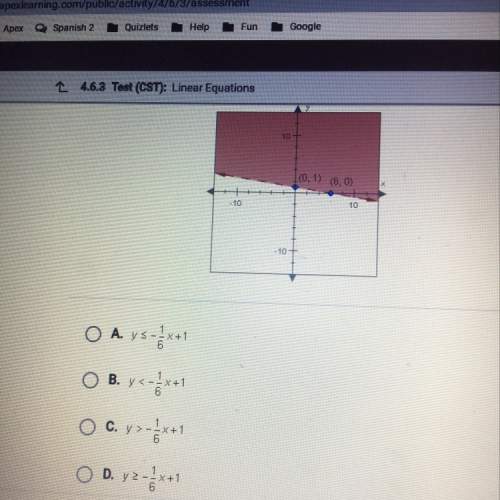
Mathematics, 08.10.2019 23:20, laurenbreellamerritt
Unlike a decreasing geometric series, the sum of the harmonic series 1, 1/2, 1/3, 1/4, 1/5, . . di- log(n! ) = θ(n log n). verges; that is, it turns out that, for large n, the sum of the first n terms of this series can be well approximated as 1 ≈ ln n + γ, i=1 i where ln is natural logarithm (log base e = 2.718 . .) and γ is a particular constant 0.57721 . .. showthat 1 = θ(logn). i=1 i (hint: to show an upper bound, decrease each denominator to the next power of two. for a lower bound, increase each denominator to the next power of 2.)

Answers: 3
Other questions on the subject: Mathematics


Mathematics, 21.06.2019 16:30, eliascampos823
Which choice represents the sample space ,s for this event
Answers: 3

Mathematics, 21.06.2019 20:00, madisonrosamond99
Guys i need ! graded assignment grade 8 checkpoint 2, part 2 answer the questions below. when you are finished, submit this assignment to your teacher by the due date for full credit. total score: of 9 points (score for question 1: of 4 points) 1. the cost of renting a car for a day is $0.50 per mile plus a $15 flat fee. (a) write an equation to represent this relationship. let x be the number of miles driven and y be the total cost for the day. (b) what does the graph of this equation form on a coordinate plane? explain. (c) what is the slope and the y-intercept of the graph of the relationship? explain.
Answers: 1
Do you know the correct answer?
Unlike a decreasing geometric series, the sum of the harmonic series 1, 1/2, 1/3, 1/4, 1/5, . . di-...
Questions in other subjects:

Mathematics, 24.03.2020 23:11

History, 24.03.2020 23:11



Arts, 24.03.2020 23:11


Social Studies, 24.03.2020 23:11

Social Studies, 24.03.2020 23:11

Physics, 24.03.2020 23:11

English, 24.03.2020 23:11







